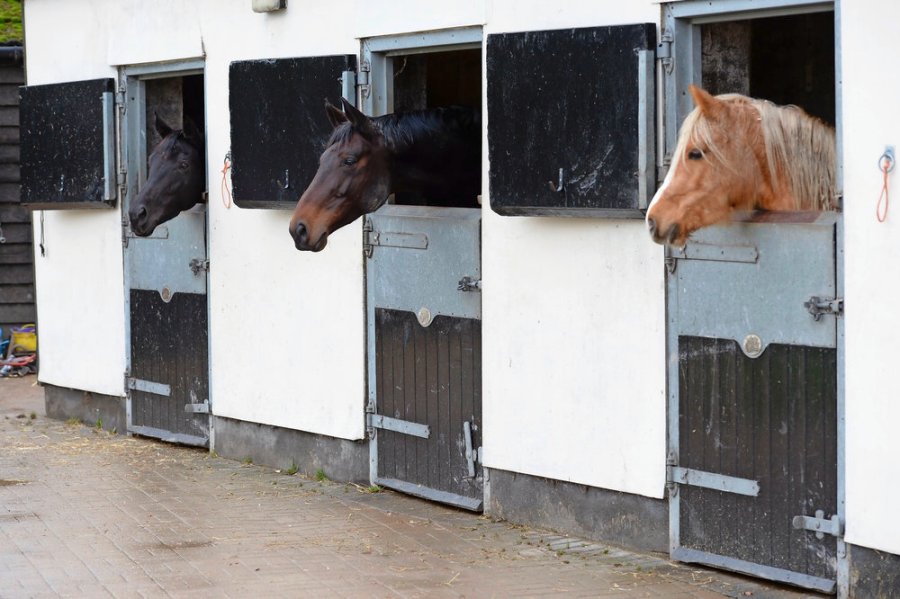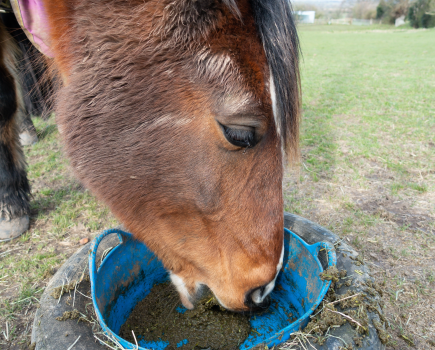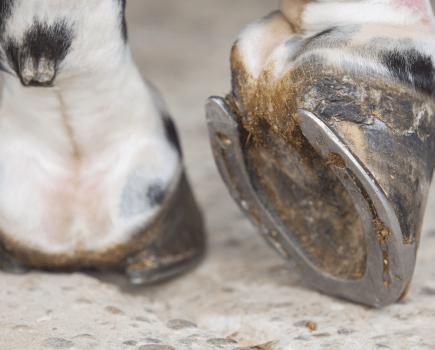Winter weather can trigger a number of problems with a horse’s health. Two of the most common issues equine vets are called out to see are thrush and stiffness. Vet Charlotte Fenn MRCVS from Tyrrells Equine Clinic explains how you can tackle and prevent these occurring when taking care of a horse in winter.
1 Protect your horse from thrush
To tackle thrush, it’s essential to keep your horse in an environment that’s as clean and dry as possible. Standing for long periods of time in wet bedding or being turned out in constantly wet pastures can lead to thrush, as it provides the perfect environment for the thrush-causing bacteria to take hold.
Using paper or shavings as bedding may benefit your horse if they are prone to thrush, as well as making sure their stable is mucked out at least once a day. If your horse has to be stabled for periods, banking the sides of the bed to allow him to stand on a clean, dry surface for a few hours may help.
If your horse is turned out, try and keep him in pastures that are reasonably well drained or sectioning off any areas of the field that are very muddy and that he’s likely to stand in i.e. around gates.
Good and regular hoof trimming and shoeing is also essential in reducing the incidence, as is daily picking out and cleaning of the feet.
2 Keep your horse’s joints active
Arthritis is a common diagnosis, and cold weather or standing in a stable for long periods can cause a horse to become stiffer. It means that chronic inflammation within one or multiple joints has caused damage to the cartilage lining. There are various treatment options that may be suited to your horse, depending on the degree of damage present. Your vet can advise you on the most appropriate options, which may include injecting medication directly into the joints, possibly alongside the use of oral non-steroidal anti-inflammatories (NSAIDS).
Supplements including glucosamine and chondroitin may also be beneficial and there are many things you can do at home in your general management that’ll help your horse live comfortably with arthritis for years. Keeping the horse moving is essential, so continue riding if possible. Little and often is ideal, as is turning him out as much as possible.
Good hoof management, such as having feet trimmed regularly, reduces joint strain, as is choosing appropriate shoes to allow cushioning without being too soft. Managing your horse’s weight is also essential. If their workload reduces in winter, you may have to alter their diet as extra weight puts strain on joints. Remember it is OK for horses to lose some weight in winter — it’s what their bodies are designed to do.
Charlotte Fenn BVetMed MRCVS is an equine vet from Hertfordshire. She works at Tyrrells Equine Clinic and particularly enjoys internal medicine and acupuncture.









